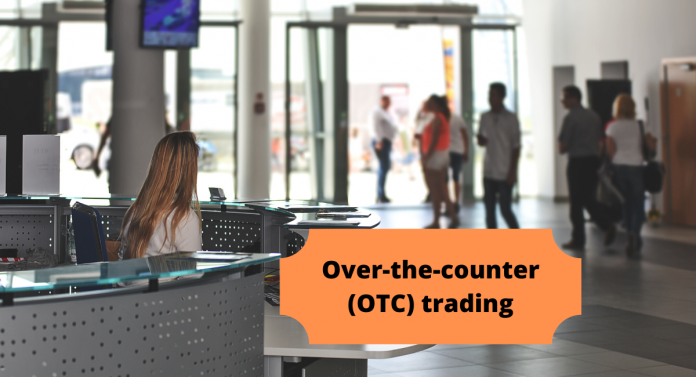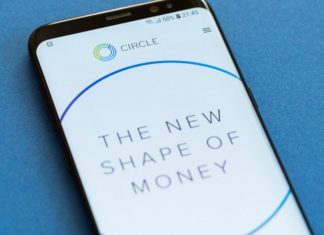Over-the-Counter (OTC) Trading is a big thing. Just ask the whales. But what’s it all about?
In an Over-the-counter (OTC) market, trading is done directly between two parties (decentralized) without the involvement of an exchange. Financial instruments that are non-standardized and hence cannot meet formal exchange listing requirements are traded here. These can include trade bonds, currencies, derivatives, and structured products. The Financial Industry Regulatory Authority (FINRA) regulates the OTC markets.
How does OTC work?
Networks of market makers carry out over-the-counter trading of stocks. Dealers quote prices at which they will buy and sell a financial product. The two well-known networks are managed by the OTC Markets Group and the Financial Industry Regulation Authority (FINRA).
OTC market trading is conducted electronically through the Over the Counter Bulletin Board (OTCBB) or the Pink Sheets listing services. The OTC Markets Group operates some of the most well-known networks, such as the Best Market (OTCQX), the Venture Market (OTCQB), and the Pink Open Market.
Crypto OTC Trading
Standard exchanges do not provide liquidity when a high volume of crypto transactions is required. In this case, the Crypto Trading Desks act as the mediator for executing a transaction. Besides, Crypto OTC trading channels include crypto-to-crypto or fiat-to-crypto. Trading happens between the “Trading Desk” and another individual or institution, known as the “counterparty”.
That said, there are 2 major models:
Principal Desk
In Principal trading, the Trading Desk buys crypto in the secondary market, holds, and then sells them. They use their funds to purchase the asset from the counterparty.
Standard steps include:
- Onboard to the OTC Platform;
- Request a quote via a chat;
- Desk’s traders will respond with a price based on current market rates and conditions;
- Decline, counter or accept;
- If the counterparty accepts, the desk is obligated to deliver the counterparty the requested volume at the agreed price, per a legal agreement signed during the onboarding process;
- Once the desk sources the desired volume, they will send instructions to wire the funds;
- The desk will dispatch crypto after they receive the wire money. This is a very important point to be careful about. The investor needs to carefully choose a desk and beware of scams.
The agency model
In this model, the agency does not trade with their funds. It searches for available options of purchase and acts as a middleman to broker a deal on behalf of the counterparty.
Standard steps include:
- A counterparty funds an account with the agency;
- Agency offers a range the counterparty is willing to buy crypto for;
- The agency desk will then go and attempt to purchase the counterparty’s funds at an agreed-upon price.
Who are the crypto OTC Trading users?
In the initial days, the most important customers of OTC desks were crypto miners. In October 2018, the Cumberland OTC desk reported that most of its trades happened during Asian working hours. This meant that Asia-based miners, such as Bitmain and BTC.com were using OTC trading.
The next phase saw the introduction of wealthy investors, payment processors and hedge funds. The trades were mostly performed via online messaging services like Telegram or Skype.
Since then, Institutional investors have replaced high wealthy individuals as the biggest buyers of cryptocurrency transactions worth over $100,000 (Source: Bloomberg)
Crypto OTC Providers
ItBit was launched in 2012. In May 2015, itBit obtained a trust company charter and opened the first regulated bitcoin exchange in the U.S. itBit offers trading and custody services for Bitcoin (XBT), Bitcoin Cash (BCH), Ethereum (ETH), Litecoin (LTC), Stellar Lumens (XLM), Paxos Standard (PAX), PAX Gold (PAXG) and Binance USD (BUSD).
Features:
- Personalized white-glove service for institutions, investors and active crypto asset traders;
- Provide FIX and REST trading APIs;
- US customers receive full fiat and crypto asset protection, account reporting and more;
- Strict regulatory oversight, global AML/KYC compliance, and 100% offline crypto asset cold storage;
- Allows customers to trade crypto assets on both an exchange and OTC desk using one account;
- Flat rate transaction fees and no crypto withdrawal fees.
To be eligible for Kraken Over-the-counter (OTC), clients must be verified to the Pro level (individual or corporate). The minimum trade size is 100,000 USD equivalent.
Features
- Kraken OTC desk supports all cryptocurrencies/digital assets and fiat currencies listed on the Kraken Exchange: USD, EUR, JPY, and CAD;
- Kraken does not charge any fees for the OTC service;
- 1-on-1 service includes initial expert consultation about trade execution, with trade reporting and market insights;
- Kraken provides clients with daily trade and market recaps as well as expert desk opinions of the current crypto market space.
Binance OTC
Binance launched its OTC service in Jan 2019. To be able to trade via Binance OTC a counterparty needs to be a Binance Level 2 or above (verified) and trade order worth at least 10 BTC.
Binance has one of the deepest liquidity pools in the market and hence can access traders who can provide extremely competitive pricing and liquidity in not only BTC but also in altcoins, the top ones and also the ones with low market caps.
Features:
- Trade is confirmed in as quickly as 1-2 minutes from the time of reaching out;
- Binance OTC uses Binance Chain with 1-second block times. This makes settlements faster;
- With Binance Trading counterparty’s coins stays in his Binance account, until Binance is ready to settle, and they are exchanged at the same time;
- Settlement occurs inside the Binance ecosystem which means it will not go through blockchains or block explorers. This provides anonymity.
Pros and Cons
Pros
- It helps to trade high volumes of crypto when liquidity is a problem in the standard market;
- OTC Trading is a High-Risk-High-Gain trading method;
- Provide greater flexibility to market participants which enables them to adjust derivative contracts to better suit their risk exposure;
- Increases overall liquidity in financial markets;
- Provides anonymity.
Cons
- The sources of the large crypto amounts are not transparent. A trend of a spike in OTC trading is observed during major hacks;
- Counterparty risk – There is a risk of the other party’s default before the fulfillment or expiration of a contract;
- Many OTC brokers do not yet provide a trusted custody solution, creating a settlement and operational risk;
- Liquidity in the OTC market may come at a premium;
- Less regulation leads to less available public information, the chance of outdated information, and the possibility of fraud.
Conclusion
A major volume of trading happens via OTC and such volume plays a substantial role in market movements. OTCs act as a serious enabler for the institutions to get into crypto. It is a convenient medium for them until crypto trading practices have been standardized.
We predict the use of OTC trading to increase in the coming days.
Disclaimer
This article is not financial advice. It is for educational purposes only. It is our point of view. Please do your due diligence before making any financial investment decisions.
References
Investopedia, Circle Research, Cointelegraph, Binance, Corporate Finance Institute




























